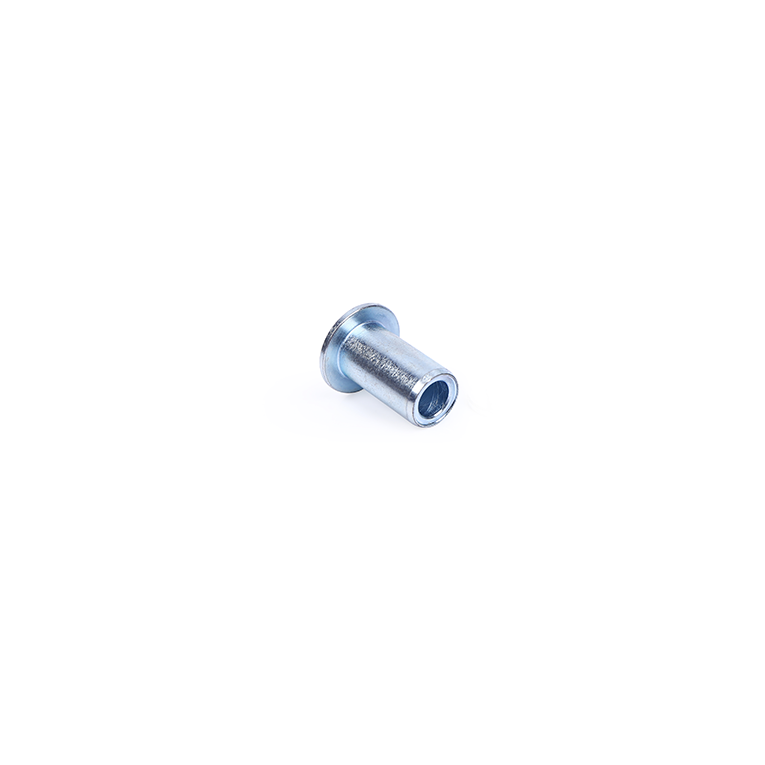
Galvanization: An Overview
Introduction
Galvanization is a process of applying a protective zinc coating to steel or iron to prevent rusting. The most common method is hot-dip galvanization, where metal parts are submerged in a bath of molten zinc. Other methods include electro-galvanization, thermal spraying, and mechanical plating. The purpose of galvanization is to protect the underlying metal from corrosion, thereby extending its lifespan.
Types of Galvanization
1. Standard Zinc Plating (Galvanization)
2. Iridescent Zinc Plating
3. Yellow Zinc Plating
4. Environmentally Friendly Zinc Plating
Standard Zinc Plating (Galvanization)
Standard zinc plating is the most basic form of galvanization. It involves coating steel or iron with a layer of zinc to protect it from corrosion. This process can be carried out using various methods, including hot-dip galvanization and electroplating.
. Color: Typically, standard zinc plating has a bright, shiny silver appearance.
. Uses: It is widely used in construction, automotive, and manufacturing industries to protect metal structures, car parts, and various hardware components from rust and corrosion.
. Environmental Impact: Standard zinc plating is generally considered environmentally safe, but the specific impact depends on the chemicals and processes used during plating.
Yellow Zinc Plating
Yellow zinc plating involves the application of a yellow or gold chromate conversion coating over a zinc layer. This type of plating provides a distinctive yellowish appearance.
. Color: The surface has a yellow to golden hue.
. Uses: It is frequently used in automotive and industrial applications where moderate to high corrosion resistance is required. Components like fasteners, brackets, and various mechanical parts are often treated with yellow zinc plating.
. Environmental Impact: Similar to iridescent zinc plating, traditional yellow zinc plating processes used hexavalent chromium, which is not environmentally friendly. Although safer alternatives using trivalent chromium exist, they must still be managed properly to minimize environmental impact.
Environmentally Friendly Zinc Plating
Environmentally friendly zinc plating, also known as eco-friendly zinc plating, utilizes non-toxic and less harmful chemicals in the plating process. This type of plating aims to reduce the environmental impact of traditional zinc plating methods.
. Color: Usually, it has a silver or dull gray appearance, similar to standard zinc plating, but without the harmful substances.
. Uses: This type of plating is used in a wide range of industries, including automotive, electronics, and construction, to provide corrosion resistance while adhering to environmental regulations. It is particularly favored in applications where environmental and health safety are paramount.
. Environmental Impact: Eco-friendly zinc plating processes eliminate the use of hazardous materials like hexavalent chromium. Instead, they use trivalent chromium or other benign substances, making the process significantly safer for both the environment and human health.
Comparative Analysis
1. Corrosion Resistance: While all types of zinc plating provide corrosion resistance, iridescent and yellow zinc platings offer higher protection levels due to their additional chromate layers.
2. Appearance: Standard zinc plating is silver, iridescent zinc plating shows rainbow colors, yellow zinc plating is golden, and environmentally friendly zinc plating usually appears silver or gray.
3. Environmental Impact: Environmentally friendly zinc plating is the safest option, as it avoids the use of toxic substances. Traditional iridescent and yellow zinc platings that use hexavalent chromium are considered environmentally harmful.
Applications in Industries
. Construction: Standard and eco-friendly zinc platings are widely used for structural components, fasteners, and other metal parts exposed to the elements.
. Automotive: Iridescent and yellow zinc platings are common in automotive applications due to their superior corrosion resistance and aesthetic appeal.
. Electronics: Environmentally friendly zinc plating is preferred for electronic components to ensure compliance with environmental regulations.
. Manufacturing: All types of zinc plating find uses in various manufacturing sectors, depending on the specific requirements for corrosion resistance, appearance, and environmental safety.
Conclusion
Zinc plating plays a crucial role in protecting metal components from corrosion across various industries. Understanding the differences between standard zinc plating, iridescent zinc plating, yellow zinc plating, and environmentally friendly zinc plating helps in selecting the right type of coating for specific applications. Among these, environmentally friendly zinc plating stands out as the most sustainable choice, addressing both performance and environmental concerns.

Copyright © 2025 Dongguan Yifeng Metal Co., Ltd. | All Rights Reserved